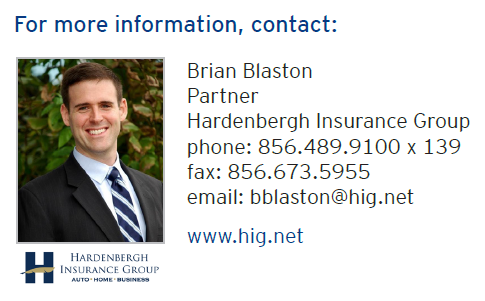 We put together the top five questions about business insurance that we receive from insureds about a wide variety of issues in the insurance industry and answered them as simply and straightforward as possible. When you deal with the insurance industry, chances are that you are going to have a lot of questions that need answering.
We put together the top five questions about business insurance that we receive from insureds about a wide variety of issues in the insurance industry and answered them as simply and straightforward as possible. When you deal with the insurance industry, chances are that you are going to have a lot of questions that need answering.
Download Printable Article (PDF) >>>
5 questions about business insurance
(1) What is an additional insured?
An additional insured is a person or organization that is not automatically included as an “insured” in a liability policy under the section titled “Who Is An Insured” and is added as an “insured” to the policy at the request of the named insured. The named insured provides additional insured status to others to protect the other party because of a close relationship with that party or to comply with a contractual agreement requiring the named insured to do so. In liability insurance, additional insured status is commonly used in conjunction with an indemnity agreement between the named insured (the indemnitor) and the party requesting additional insured status (the indemnitee). Having the rights of an insured under its indemnitor’s commercial general liability (CGL) policy is a way of backing up the promise of indemnification. If the indemnity agreement proves unenforceable for some reason, the indemnitee may still be able to obtain coverage for its liability by making a claim directly as an additional insured under the indemnitor’s CGL policy.
(2) What does it mean if my insurance is primary and non-contributory?
When you list a person or organization as an additional insured on a primary and non-contributory basis, you are confirming that your insurance is primary (will respond first) and you will not seek contribution from their insurance for a given claim until your policy limits are exhausted.
(3) What is a waiver of subrogation?
A Waiver of Subrogation is an agreement between two parties in which one party agrees to waive subrogation in favor of the other party in the event of a loss. The intent of the waiver is to prevent one party’s insurer from pursuing subrogation against the other party. Subrogation is the process in which a carrier, after paying for a loss, seeks reimbursement from other parties that may have contributed to the loss.
(4) What are some methods for me to reduce my business insurance premiums?
Premiums are a function of coverages and limits requested as well as pricing based on risk characteristics and historical claims experience. Purchasing lower limits or less coverage can lower premiums, however, it can leave you exposed to a financial loss should you not have sufficient limits or coverages in place to respond to a loss. Reviewing limits on an annual basis to ensure that limits are accurate can help prevent purchasing unnecessary limits.
For example, if a contractor insures his equipment on an Actual Cash Value basis, each year the value that he would receive in the event of a loss goes down. This is because Actual Cash Value factors depreciation into the claims settlement. If he does not adjust the equipment values on an annual basis, he is paying premiums based on new values that he would not receive in the event of a loss and is paying a higher premium.
Another way that premiums can be reduced is by increasing your “Risk Profile”. Your Risk Profile, put simply, is how you are viewed in the insurance marketplace. Underwriters give preferential treatment to accounts that they view as being best in class. They are able to apply additional credits to accounts that they feel are above average from a risk management perspective. Examples of things that elevate your risk profile in the insurance marketplace are things such as having a return-to-work program, having a functional safety committee, complying with OSHA regulations, having an employee incentive program, conducting regular employee training, having an established driver hiring criteria, having safe driver training, etc.
Organizations that do these things tend to have fewer claims and are more attractive to underwriters. Hardenbergh Insurance has the expertise to help you implement these programs into your organization. Finally, another way to reduce premiums is by not having claims. Underwriters will use your historical claims experience in the development of your premiums. State rating bureaus will use your historical claims experience to develop your experience modification factor which has a huge impact on your workers compensation premium. Techniques to reduce the frequency and severity of your claims include having a functional safety committee, developing a return-to-work program, regular safety training, developing an employee incentive program, conducting regular “toolbox talks”, etc.
(5) How does a claim affect my rates?
This is one of the most asked questions about business insurance. In general, claims will have a direct correlation with your premiums. As claims go up, so do premiums. This is especially true with Automobile Insurance and Workers Compensation Insurance. A one-time property claim may not cause drastic rate increases as the property itself may be in better condition after it is repaired than it was pre-loss.
Still have questions about business insurance? Contact Brian Blaston at Hardenbergh Insurance!



